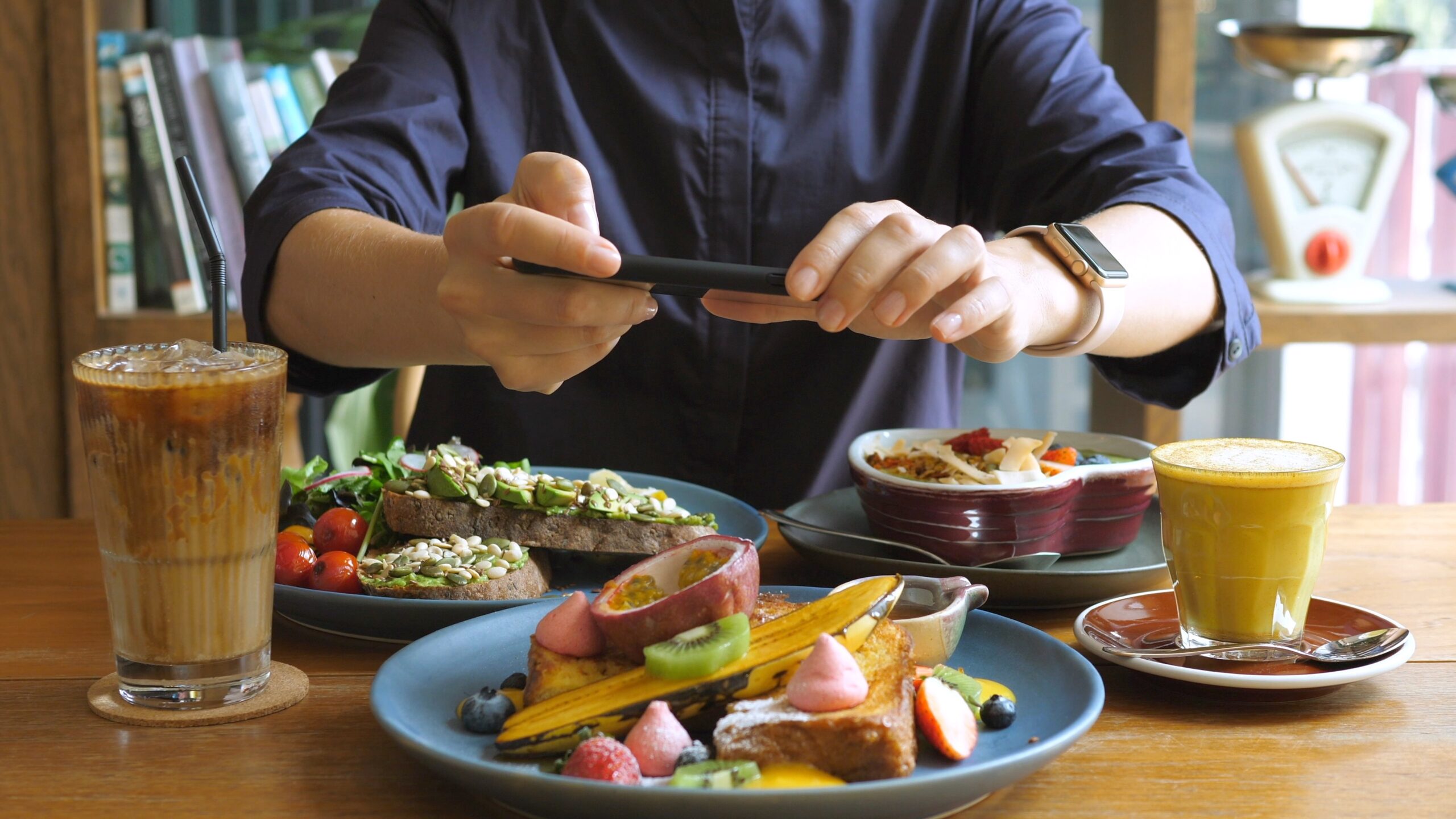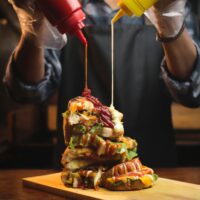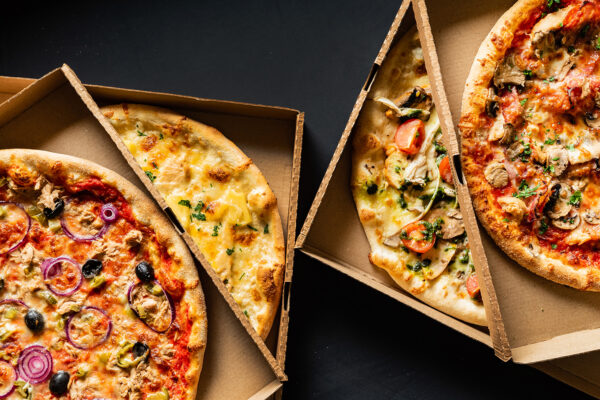Each year, the Datassential team releases an annual trends report, which provides a comprehensive look at the top foods and flavors we believe will be showing up in a big way this year, and our far-looking larger trends that we believe will have a substantial impact on the restaurant industry in the years to come. If you’ve ever wondered how we predict and determine these trends, read more for a behind-the-scenes look at the process and answers to frequently asked questions from the industry.
To answer these questions for you, we went straight to the expert: our trendologist, Mike Kostyo, a 9-year Datassential veteran and all-around authority of food, flavors, and big industry trends.
Below is a Q&A featuring Mike’s responses to our most frequent questions.
Q: What’s the process of determining the annual trends list? Where do you start?
A. We start earlier and earlier every year, with initial conversations now taking place in the late summer for the next year’s list. We start by asking everyone at Datassential to weigh in on what they are seeing. We have a shared document that anyone can add ideas to, which has been more important than ever during the pandemic when those of us on the content team aren’t traveling as much.
The content team then takes those ideas and distills them down, looks for themes, pulls out any trends that we absolutely need to cover, etc. and we begin discussing what will go in the annual list.
By the end of that process, we have a huge, messy document with lots of ideas, random thoughts, product and menu mentions, and tangents that we have to make sense of, but eventually, we hone it down to our final outline and trends.
This year was also a little different in that we knew we wanted to develop our idea of what a restaurant and market could look like in the future, so we also added a separate part of the process where we pulled together Datassential’s most creative, future-forward thinkers. We divided them into three groups and had six different ideation sessions where we discussed our assumptions about what life in 2050 would look like are, voted on those assumptions, and then developed restaurant and supermarket concepts that might exist in 2050 knowing those assumptions.
Q: How much is an art and how much is science in your selection process?
A: So much of what we do is informed by the data, often in ways you might not even consider. When we include something in our annual trend report, it’s based on reports and data that we have seen and worked with for years. Everything we do at Datassential is backed by data. Not only do we consider the data when we are deciding on the trends, but we also field multiple surveys to support the annual trend deck, or change a topic if the data is telling a different story.
But, just like in creating a dish or menu item, the data can only get you so far; there’s still an art to it. When we develop our trends lists, we are looking at things that are very future-forward and we are developing a story using our years of background knowledge and secondary research.
Our reliance on data can also differ from trend to trend.
Our section on the metaverse, for instance, has some consumer data, but it’s really more about considering what the concept of a metaverse might mean for the food industry. Our section on “crave drivers,” on other hand, is purely based on data from our SCORES database.
Q: Datassential tends to release annual trends that are much bigger-picture than others in the space. Is that intentional? What’s your thought process behind those big trends like the metaverse?
A: We do, and it is intentional. A lot of prediction lists out there are really more like confirmation lists, which is to say that they confirm trends that have been spotted and discussed for years. Telling you what should be on menus or retail shelves right now, or in the immediate future, is what we do every day. Our clients don’t need an annual trend prediction list to know that functional foods are still growing. We take that longer, wider, more futuristic view because we felt like that’s something that was missing from the industry. This report is a chance for those in the industry to take that long view, to think beyond the day-to-day projects you are working on, and consider the factors that will impact your brand in the long term. That doesn’t mean we don’t consider the immediate implications in the report, and we always include some trends that will resonate in the next year or two. We also think that taking time to consider the big picture view makes you more creative in the short term. Maybe you aren’t opening a shop in the metaverse next year, but considering the need states and technologies that are driving conversations around the metaverse can inspire your short-term digital strategy. It never hurts to start thinking about things early – every idea seems outlandish until suddenly it feels like it’s everywhere and you wish you had been ready.
Q. What’s the biggest cultural or non-food driver for trends? Or is it a combination of influences? What are those and how have those changed over the years?
A. Communication is the biggest driver of trends. In fact, a trend is simply the product of communication. It’s a chef or a customer telling their coworker or friend about a food or dish, that person trying it, and it grows from there. You can’t have trends without communication. That means that changes in how we communicate have huge impacts on food trends. Digital, immediate, global communication and social media have changed food trends forever. The speed at which we can learn about something, see it “everywhere,” and share it means that the trend cycle has sped up and trends move faster than ever. It has also democratized trends, which will continue to impact our industry in the future as anyone with a phone can become a food influencer on a platform like TikTok. There are also other factors, like demographic changes, that impact food trends, but communication is what ties it all together.
Q. How much does health play in food trends today?
A. Health is inextricably linked with what we eat, so you can’t really separate health from any food trend – it will always have an impact. You see a pretty clear evolution in terms of health trends and consumer preferences over the years, too. We first introduced the concept of Healthy 3.0, which is the demand for functional foods, in one of our annual trend reports, and later introduced Healthy 4.0, which is all about personalization, in a trend report. In recent years we’ve obviously seen a lot of interest in plant-based foods, so this year we’re looking at some of the pushback against meat replacements and the number of consumers who are saying they only want whole or “natural” fruits and vegetables and are rejecting the “processed” options.
Q: What’s the difference between something that qualifies as a trend vs. a fad or inception-level ingredient that doesn’t move through the MAC (Menu Adoption Cycle)?
A. To put it simply, fads are short-lived and trends have long lives. Fads tend to be driven by a lot of media hype and there is a limited true need for the item – it’s fun and gets attention for the moment. Trends, on the other hand, are applicable and useful across a range of segments, dishes, products, consumers, etc. Sauces and flavors tend to have long lives, for instance, because you can adapt them in so many ways – one chef can put it on a pizza, another on a sandwich, a manufacturer drizzles it over a frozen bowl, etc. You can usually spot a fad vs. a trend when you look at the menu penetration: a fad will have really extreme growth very quickly, which is unsustainable. A trend is slow and steady. Certainly not everything is going to move through the Menu Adoption Cycle for a variety of reasons – maybe the ingredient is too expensive for it to be used on a wider scale, or it’s a little too “out there” within our culture. But things can change over long periods of time. Insects are still in Inception, but who would have thought there would be cricket snacks on the shelves of your average Whole Foods a decade or two ago?
Q. What does it take for a food trend to make it to the mainstream?
A. First and foremost, it takes communication. As I said earlier, a chef or individual shares a food or flavor with someone else, they try it and share it, and so on. So communication tools are essential. There also has to be enough of a supply of it at a price that consumers can afford. It needs to fit into the current overall trend landscape, meaning that there are other factors that support the growth of the trend. Right now, a plant-based option has a much higher chance of hitting the mainstream, because there is a greater demand for plant-based foods and consumer preferences are changing. Last, but certainly not least, it has to taste good. Though taste has taken a brief backseat to cleanliness and sanitation when it comes to what consumers consider to be the most important factor when purchasing food, in the long run taste has been and will continue to be the most important factor overall.
Q. How do you predict trends in an era of such uncertainty? Does COVID’s persistence, other larger factors make trends harder to predict today than when you began?
A. COVID has made it harder, in some ways, but also a little easier in others. On the one hand, things change on a dime and the entire landscape is in flux. One day consumers feel more comfortable going to restaurants again, and the next a new variant has them cooking at home again. In one city or state, you have consumers and operators who are operating normally, in others you have more regulations and changing policies. So from that perspective, it’s harder. On the other hand, from a market research perspective, the Datassential team has been surveying consumers and operators regularly throughout the pandemic and consumers make some decisions that aren’t surprising or mirror reactions to past problems like recessions. So they start purchasing comfort foods again, like pizza and meaty entrees. It’s a health crisis, so they are looking for immune-boosting foods like citrus. Some things you can foresee.
We’re also starting to get a clearer picture of how the pandemic will impact consumers and the food industry for the longer term, which is a section of the 2022 Annual Trend Report. We are starting to see what our work lives will look like for years to come, we are starting to see consumer activities like cooking at home that will stick around for years. So it allows us to plan for that future.
Q. How do you and the team stay up on the latest trends when you’re prevented from going to restaurants as much because of COVID? How have you personally adjusted to this new pandemic world as a person who enjoys trying new things?
A. We certainly relied a lot more on the Datassential team across the country, social media, and tips from clients, friends, family, etc. And we’re lucky that we work on the content team, so we already do a ton of secondary research for the TrendSpotting Reports we publish. But our own personal experience is also always just a starting point – we always want to make sure that we are backing it up with research and data.
Q. What is the 2022 trend you’re personally most excited about?
A. I’m most excited to see more Eastern European foods on menus and at retail. Pierogi are my favorite foods of all time, so it’s exciting to see these creative versions at gastropubs and on food trucks. My Dad makes his own cevapi, but it’s something very few people have heard of if you aren’t from a family with an Eastern European background, so it’s always exciting when others discover the foods you love. I think it will also be interesting to see where the metaverse goes. These are early days for the concept, so we have a chance to really create the future right now. Some of the stories and numbers that we saw when researching that section were shocking – the kids who prefer digital birthday parties over real-life birthday parties, or that a collection of NFT monkeys hit $1 billion in sales (Google the Bored Ape Yacht Club if you haven’t heard of it already).
Q. How many of the foods/flavors for 2022 have you tried? Which of those you haven’t are you seeking out?
A. I’ve personally tried eight of the ten trends. I haven’t had a chance to try sikil pak, yet, and I don’t think I’ve had chiltepin peppers.
I can’t wait to see more craft Asian rums hit the U.S. market. There are some really complex, interesting options that can be used in a wide range of drinks, not just sweet tiki cocktails (unless that’s your thing!).
For access to the 2022 Annual Trends in Report Pro, reach out to hello@datassential.com
Want a sneak peek of the trends featured in the Annual Trends Report? Download a FREE copy of this Foodbytes issue.
Samantha Des Jardins is a copywriter at Datassential.










